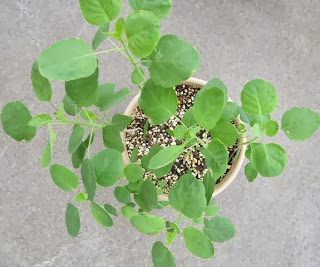
The Hibiscus, in all colors and varieties, was the State Flower of Hawaii until the 1920s. It was not until 1988 that the yellow Hibiscus, Hibiscus brackenridgei, which is native to Hawaii, was officially adopted as the State Flower of Hawaii.
Visitors to the Hawaiian Islands think that all the beautiful hibiscus flowers which they observe on the Islands are native to Hawaii. But this is not the case.

Chinese Hibiscus, also called Hibiscus rosa-sinensis, is the hibiscus plant most commonly grown as an ornamental plant on the Islands.
This is the one so often associated with Hawaiian flowers.
In addition to the yellow Hibiscus, following is a list of hibiscus plants native to the Hawaiian Islands....
- Hibiscus arnottianus produces white flowers. Hibiscus arnottianus is closely related to Hibiscus waimeae. Both produce fragrant flowers, which is a unique characteristic of hibiscus flowers.
- Hibiscus brackenridgei produces showy, bright yellow flowers. This yellow hibiscus can grow to be over 30 feet in height which is tall for the hibiscus family. Hibiscus brackenridgei is closely related to Hibiscus divaricatus.
- Hibiscus clayi is a small tree found in its natural habitat on the Island of Kauai. It produces bright red flowers.
- Hibiscus furcellatus, a pink flowered hibiscus plant, is found in the Caribbean, Central and South America, and on Hawaii. On Hawaiian Islands it is known as akiohala, hau hele, and hau hele wai.
- Hibiscus kokio can grow up to 20 feet or more with red and orange flowers.
- Hibiscus tiliaceus, common to the tropics, may be native to Hawaii or was brought to Hawaii by early Polynesians.
- Hibiscus waimeae grows up to 30 feet tall producing white flowers.
Hibiscus plants we grow on the mainland produce gorgeous flowers.
Hibiscus hybrids include....
- 'All Glow'
- 'Black Beauty'
- 'Bon Temps'
- 'Cajun Blue'
- 'Kona'
- 'Norman Lee'
- 'Peggy Hendri', and many more.
Hibiscus plants can be grown in the ground year round in plant hardiness zones 9 and 10. When brought home from the nursery the hibiscus plant should be placed in a partial sunny area and gradually moved to sunnier exposures until it's exposed to full sun.
It is essential for hibiscus plants to have a very well draining soil. Otherwise the roots may rot.
Do not to use any fertilizer high in nitrogen when fertilizing. This results in lots of vegetation growth, but hardly any flowers. Your plants will benefit tremendously from regular foliar feeding. It is important to spray both sides of the leaves. It is also very helpful to add a surfactant or a few drops of liquid dish soap, which acts as a surfactant, to your spraying solution.
When your hibiscus plant grows out of shape, it can be pruned to the desired shape. You need to be careful that all danger of frost has passed.
New growth can be easily damaged by late frost.
Unfortunately, insects like to feast on hibiscus leaves. These insects include aphids, mealy bugs, scales, thrips, and whiteflies. If this is the case a good spraying with insecticidal soap a few times or one application of a systemic insecticide should take care of the problem.
Grown indoors, hibiscus likes sunny windows or be put under grow lights.
Hibiscus is just one of many tropical plants that reward you with colorful flowers all year long when you give them the proper care they need.
Copyright © Bob Walsh
www.BobWalshPlumeriaCare101.com www.BobWalshFrangipaniPlumeriaPflege.com
www.HowToGrowPlumeriaFrangipani.com





+-+Copy.jpg)












